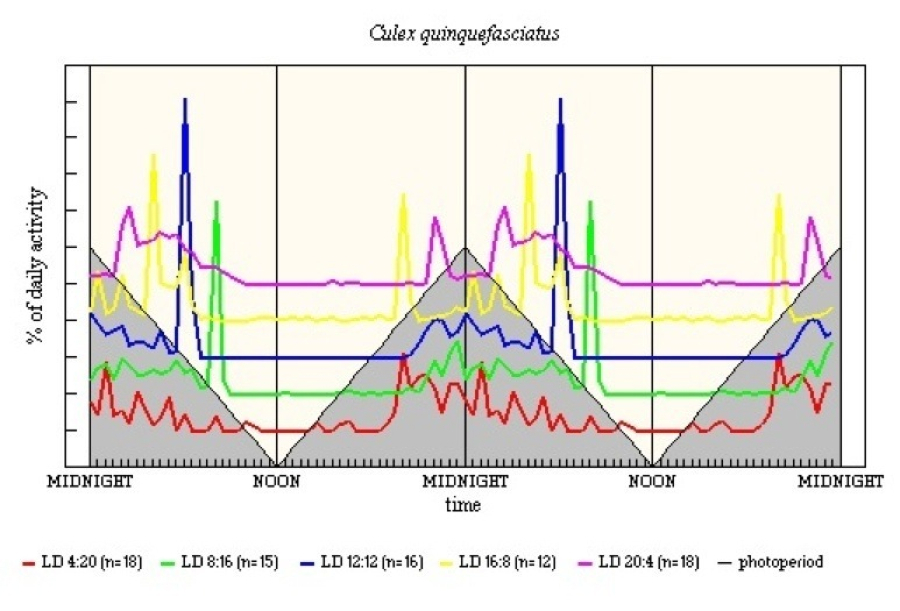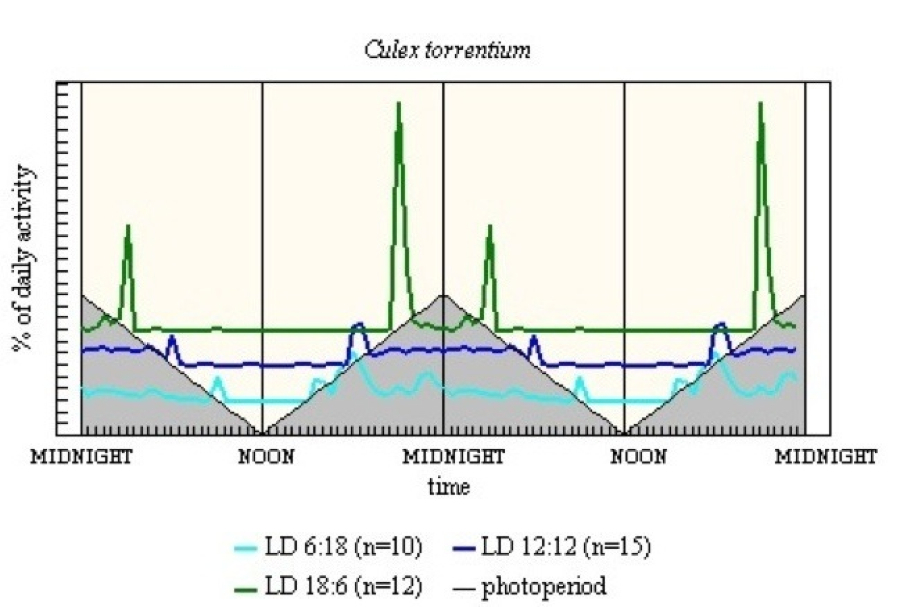

Biological Clocks in Mosquitoes - Section 2
|
Figure 19

Figure 20

The results for Cx. torrentium (see Figure 20) differ in there being a pattern of activity throughout the night in LD 12:12 and LD 18:6. The drop in activity in LD 6:18 suggests a maximum duration of the potential activity to be some 12-14h after light-off.
|
©1998, 2010 - Brian Taylor CBiol FSB FRES 11, Grazingfield, Wilford, Nottingham, NG11 7FN, U.K. Comments to dr.b.taylor@ntlworld.com |